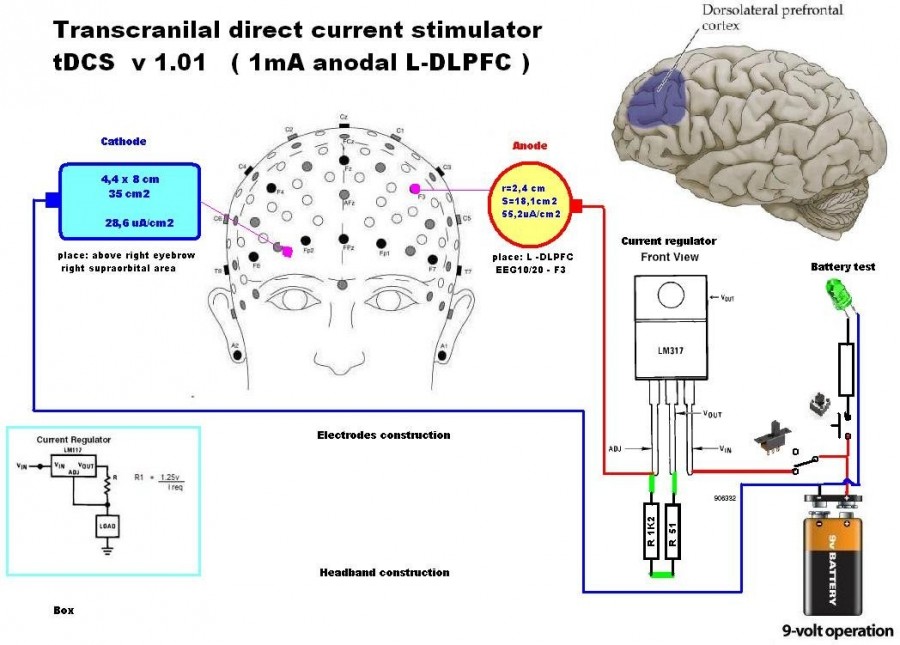tDCS project - Biohack Academy 2017 - UWA
This page describes Mark Dixon’s BioHack Academy project, a Transcranial Direct Current Stimulation (tDCS) machine. This project draws heavily on OpenStim / OpenBrainStim. This project is part of the 2017 BioHack Academy (BHA4) coordinated by WAAG Society in Netherlands.
What is tDCS
Transcranial direct current stimulation (tDCS) is a form of neurostimulation that uses constant, low current delivered to the brain area of interest via electrodes on the scalp. It was originally developed to help patients with brain injuries or psychiatric conditions like major depressive disorder. tDCS appears to have some potential for treating depression. However, there is no good evidence that it is useful for cognitive enhancement in healthy people, memory deficits in Parkinson’s disease and Alzheimer’s disease, schizophrenia, non-neuropathic pain, nor improving upper limb function after stroke. Source: WikiPedia.
 Source: DIYtdcs.
Source: DIYtdcs.
Hardware
The main components are an Arduino, an AD5206 digital potentiometer and medical grade skin electrodes. The arragnement is diagrammed below (source: OpenStim on SourceForge).

Software
About the author
Mark Dixon works at The University of Western Australia in the Research Ethics and Integrity section. Mark spent his early career doing software development on IBM mainframe computers, mostly in Operating System and compiler support. Later he was a business coordinator for software development professinals and a project manager. Mark no longer works in software but likes to keep his hand in by tinkering with Raspberry Pi and Arduino.
Contact
Mark Dixon can be contacted at The University of Western Australia. Email: Mark.Dixon@uwa.edu.au, phone: +61 8 6488-7613.